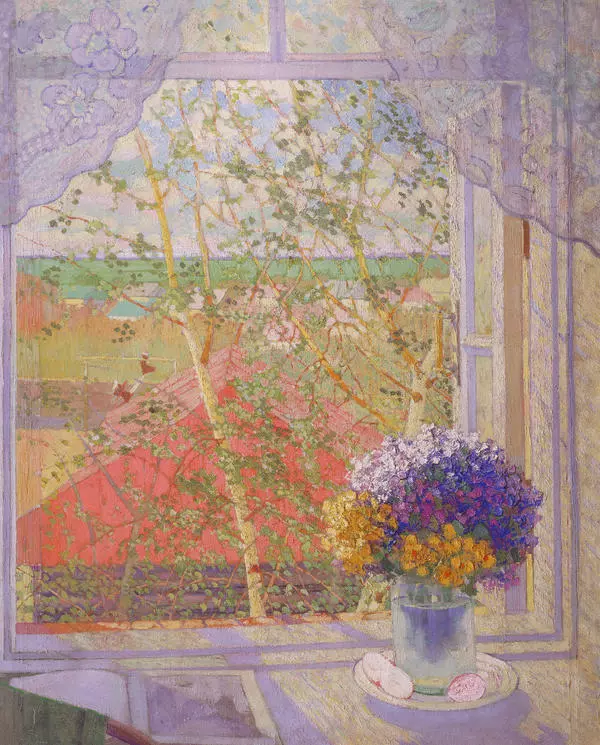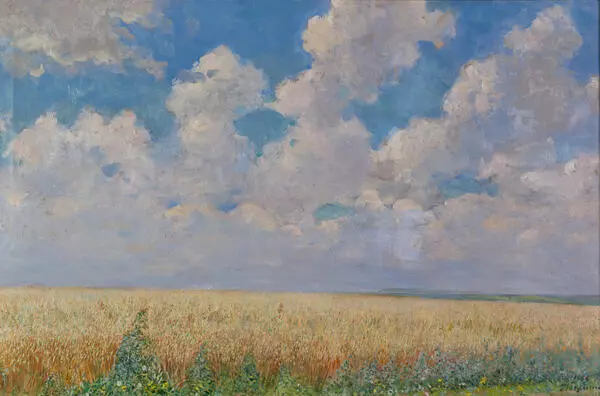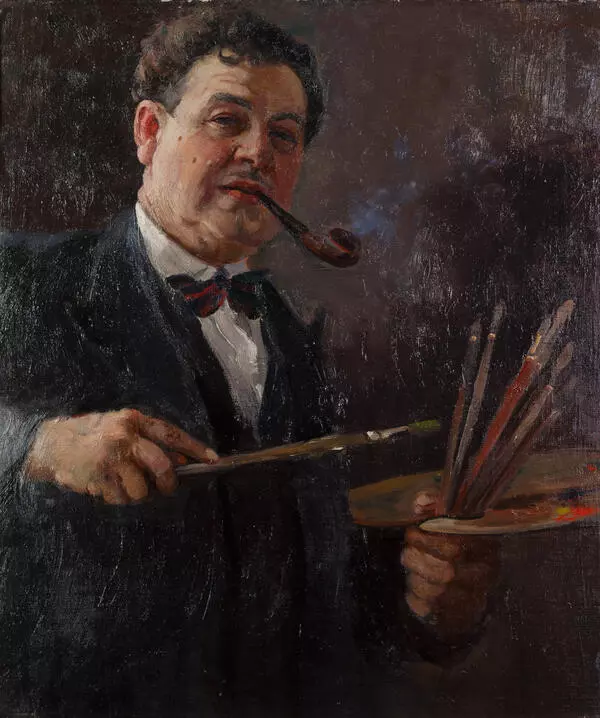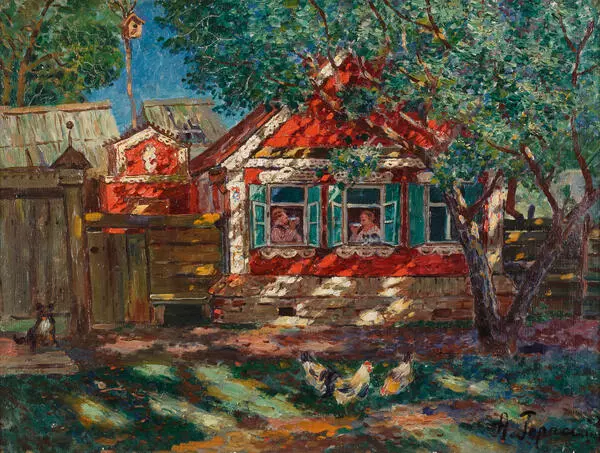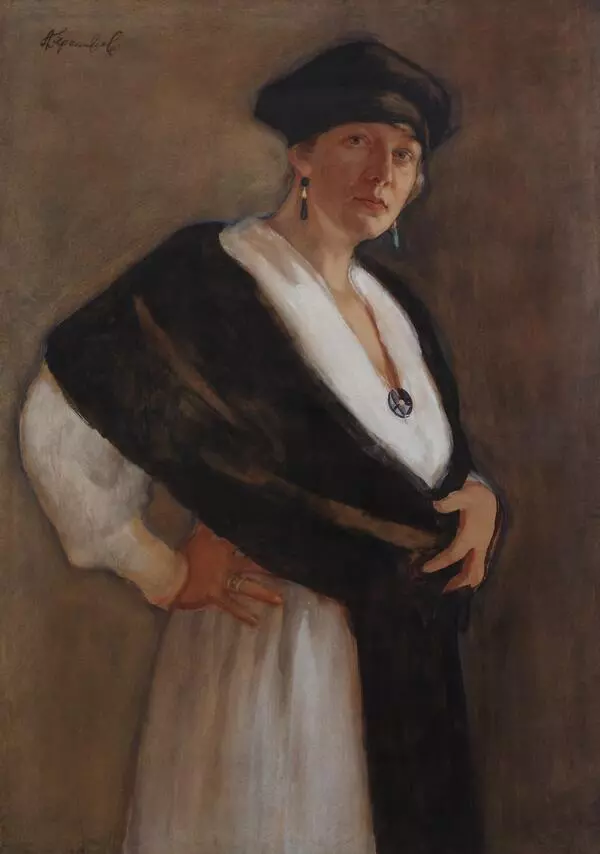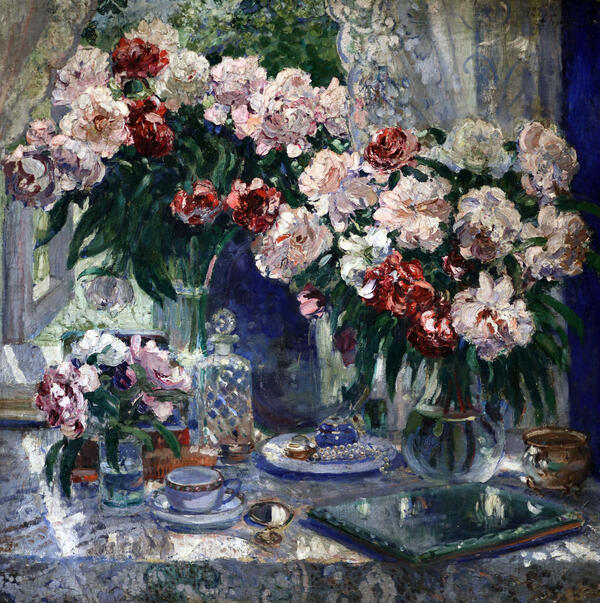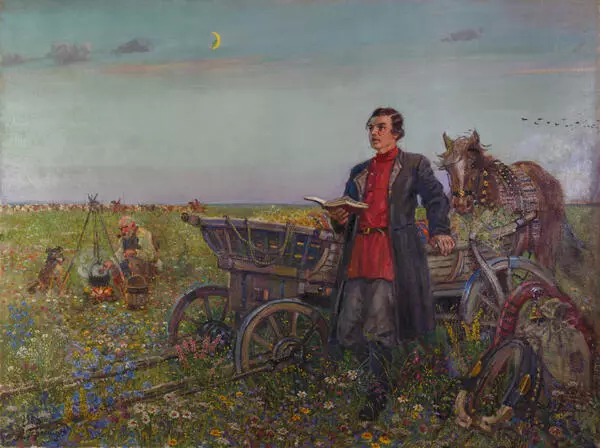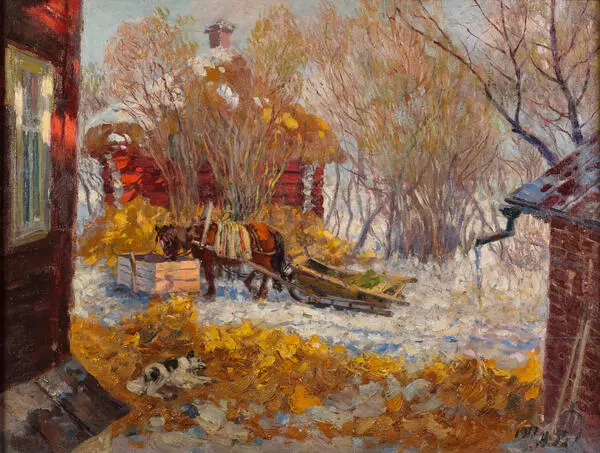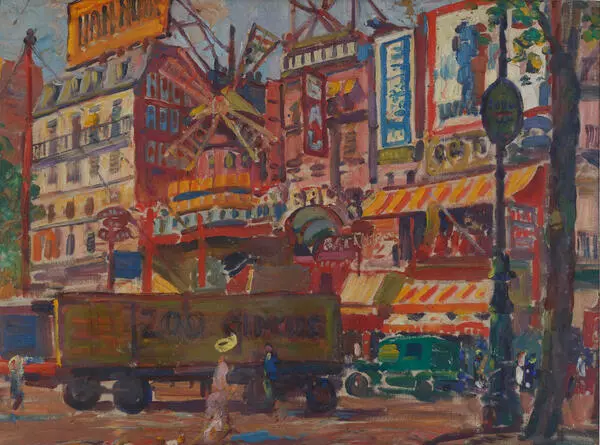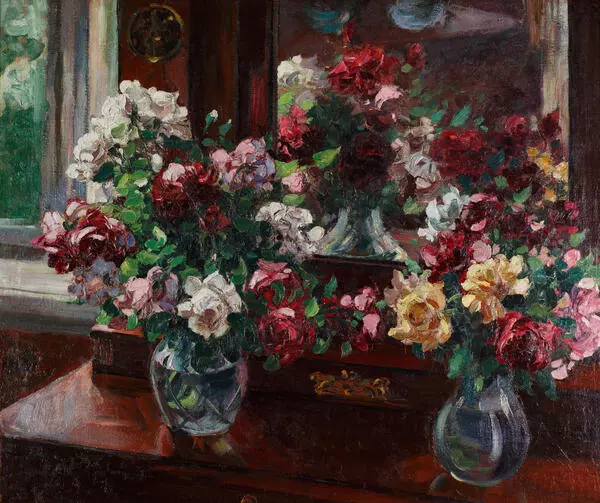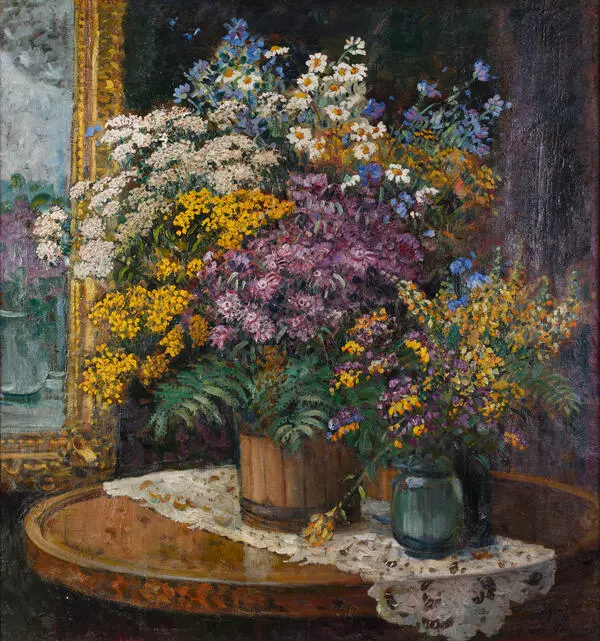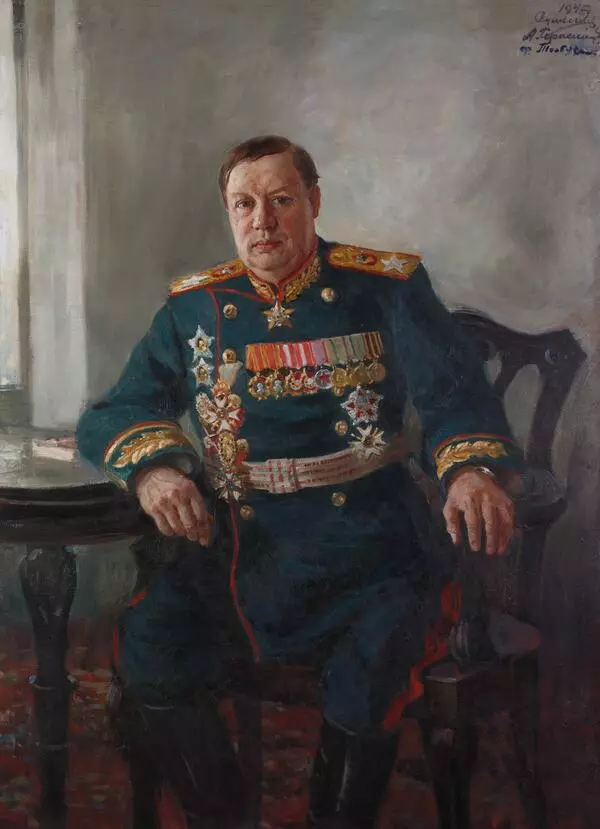After moving to Moscow, Alexander Gerasimov lived and worked in a house built according to his design in an artists’ settlement in the village of Sokol. In the 1930s, this settlement was located on the outskirts of the town, near nature, thus making its location very attractive. Alexander Gerasimov lived there as well, on 1st Levitan Street.
The artist worked on this large canvas for decades, making a lot of studies and sketches for it and developing several versions of the main composition. While creating the painting, he worked with several sitters at once. The composition depicts nude Rubens-inspired bodies of simple peasant women, enveloped in hot steam. The studies are remarkable for the women’s relaxed and uncontrived postures, which can only be achieved when a person is sure of their privacy.
This meticulous approach was not at all characteristic of Alexander Gerasimov. Usually, he started painting at once, without any preliminary materials. Yet in this work, the artist seems to have enjoyed working at length, depicting a living, trembling and vibrant female body. This unique painting shows the artist’s great talent and the contradictions that resided deep inside his soul and seem to have finally come to light. Throughout his whole life, the artist was forced to adhere to the official art of socialist realism, which he so vigorously promoted at the same time, most likely suppressing his own nature. It was in the “Countryside Steam Bath”, still lifes with flowers and rural landscapes that he was able to be sincere and show his true self. If left without the gallery of portraits of high-ranking figures, Alexander Gerasimov can be viewed in a completely different way — as a true folk artist whose paintings were created not with a brush but with fibers of his own soul. The writer Ivan Shvetsov, who was impressed by this painting beyond measure, was surprised that “such a masterpiece, equal in its artistic power to the works of the Renaissance giants, did not wind up in Russian museums and art galleries: it was kept in the artist’s studio.”
Alexander Gerasimov invested all his energy and artistic talent into this picture. The atmosphere of lightness and freshness and the pronounced plethora of life rendered this work a noticeable phenomenon in pre-war Russian painting.
The artist worked on this large canvas for decades, making a lot of studies and sketches for it and developing several versions of the main composition. While creating the painting, he worked with several sitters at once. The composition depicts nude Rubens-inspired bodies of simple peasant women, enveloped in hot steam. The studies are remarkable for the women’s relaxed and uncontrived postures, which can only be achieved when a person is sure of their privacy.
This meticulous approach was not at all characteristic of Alexander Gerasimov. Usually, he started painting at once, without any preliminary materials. Yet in this work, the artist seems to have enjoyed working at length, depicting a living, trembling and vibrant female body. This unique painting shows the artist’s great talent and the contradictions that resided deep inside his soul and seem to have finally come to light. Throughout his whole life, the artist was forced to adhere to the official art of socialist realism, which he so vigorously promoted at the same time, most likely suppressing his own nature. It was in the “Countryside Steam Bath”, still lifes with flowers and rural landscapes that he was able to be sincere and show his true self. If left without the gallery of portraits of high-ranking figures, Alexander Gerasimov can be viewed in a completely different way — as a true folk artist whose paintings were created not with a brush but with fibers of his own soul. The writer Ivan Shvetsov, who was impressed by this painting beyond measure, was surprised that “such a masterpiece, equal in its artistic power to the works of the Renaissance giants, did not wind up in Russian museums and art galleries: it was kept in the artist’s studio.”
Alexander Gerasimov invested all his energy and artistic talent into this picture. The atmosphere of lightness and freshness and the pronounced plethora of life rendered this work a noticeable phenomenon in pre-war Russian painting.






